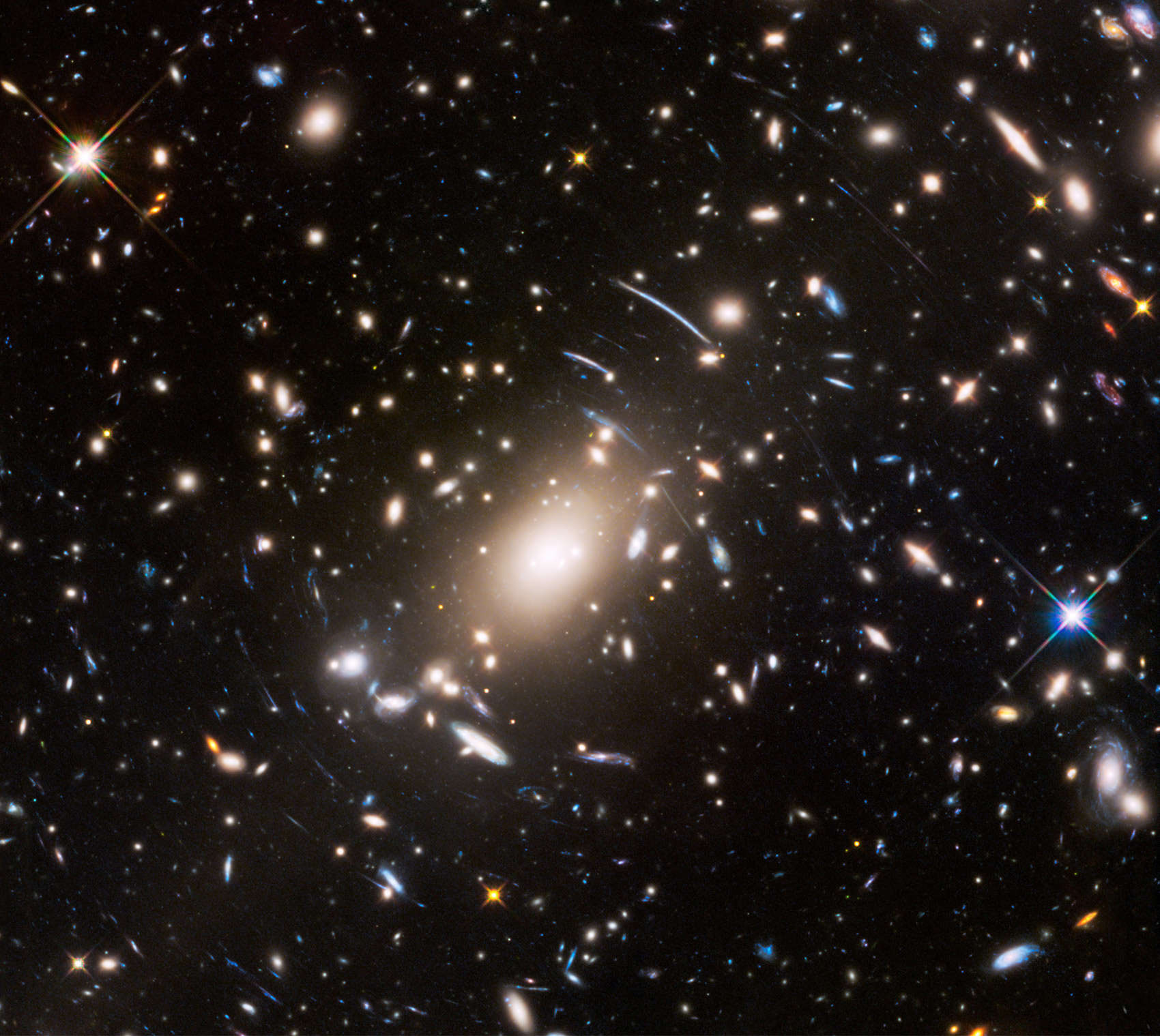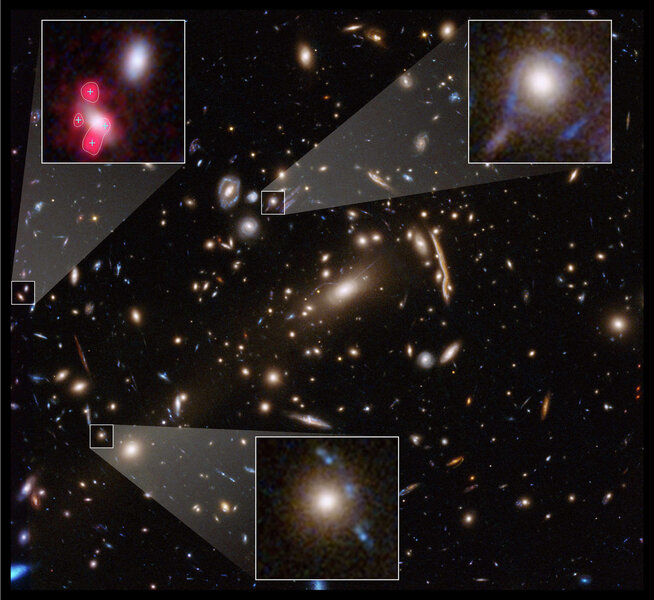Create a free profile to get unlimited access to exclusive videos, sweepstakes, and more!
What's the matter with dark matter? Observations show we're missing something.

New results gathered from observations of galaxy clusters with Hubble and the Very Large Telescope have shown that the Universe — and this is a consistently irritating property of it — isn't performing as our physics thinks it should.
In this case the focus is on dark matter. When you look at all the matter in the Universe, what we think of as "normal" matter — stuff made up of electrons, neutrons, protons, and so on — is in the distinct minority. Only about one-sixth of all matter is normal; the rest is dark matter.
We don't know a lot about dark matter, except that it gives off no light (hence the name) and doesn't interact with normal matter except through gravity. But we know it exists. We see galaxies, for example, rotating differently than expected given their shape and amount of normal matter. The only way this can be is if they are surrounded by haloes of dark matter, whose gravity gives the stars and gas in the galaxy an extra tug, affecting the way the stars move.
We see its effects elsewhere, too. Galaxies tend to exist together in huge clusters, like immense cities of galaxies, some of which have more than a thousand individual members. These clusters are strewn with dark matter, and we can actually detect how that changes the cluster behavior, especially through gravitational lensing.
This is when the gravity of a massive object (called the lens) bends the light of another, more distant object. The image we see of the more distant object gets distorted in weird ways. The light can get bent into long arcs, or rings, or multiple blobs surrounding the lensing galaxy.
Mapping the lensing effects allows astronomers to turn the observations around and figure out where the matter in the cluster is, including dark matter.
And that's where the new results come in. Astronomers looked at 11 different clusters of different masses and distances, and how they lensed background galaxies. The lensing due to the overall mass of the cluster was obvious, and in some cases has been well measured for years.
But when they looked carefully they found smaller examples of this lensing in three of the clusters, where individual galaxies were acting as the lenses. This was surprising!
To see if they could make sense of it, they turned to physics. Knowing how clusters are structured, how galaxies behave, and how their dark matter haloes work, they simulated a bunch of clusters similar to the ones observed, and then measured how often individual galaxies would make lenses.
What they found is startling: Real clusters make these kinds of events something like ten times as often as the simulations. That's a pretty big surplus, and they can't explain it. The simulations appear to be working correctly, so they suspect that our understanding of the underlying physics is incomplete.
One difference they found between reality and the simulations is in the haloes of dark matter around the individual galaxies. They measured the amount of mass in these individual galaxies by tracking how rapidly their stars are moving — the more massive a galaxy the stronger its gravity, and therefore the faster the stars orbit — and found that the dark matter haloes of these galaxies were more compact then expected from simulations.
That's also unexpected. It's not clear why the haloes are denser than previously thought, but it may point toward matter and dark matter interacting somewhat differently than what was thought, compressing the haloes, or it may indicate that our knowledge of how dark matter in general behaves isn't complete. To be fair, it could mean the interpretation of the observations and/or simulations may be off as well, though this sort of thing has been done before (however not to this level of detail) and seems to work well.
Any of these strikes me as possible. We're still not sure what dark matter even is, though it's almost certainly some type of subatomic particle we have yet to detect (axions, for example, are a theoretical particle that's a good candidate). It's pretty difficult to observe its effects, and it's only been studied in detail for a few decades — not long, on the timescale of astronomical observations.
Like any other relatively young field of science, ironically surprises are to be expected. You might not know what surprises are waiting, just that they're out there, waiting to be unveiled.
We learn more about dark matter all the time. Hopefully, as more scientists investigate this discrepant cluster result, our knowledge will jump again. Given that dark matter is by far the most abundant kind of matter in the Universe, understanding it seems like a pretty good idea.




























